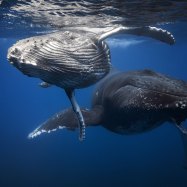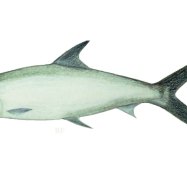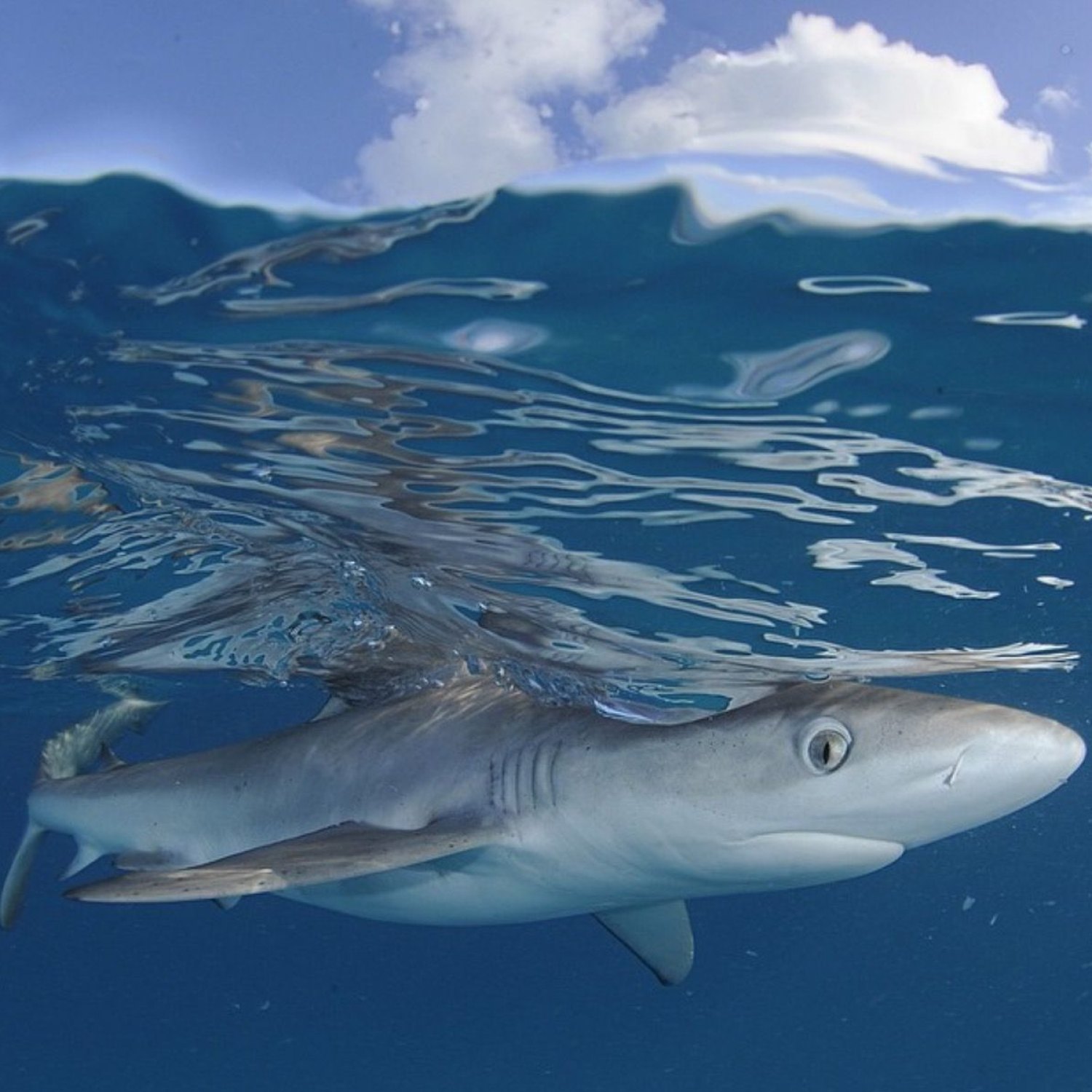
Galapagos Shark
2.5 - 3.0 meters
Generally found in the depths of the Galapagos Islands, the Galapagos Shark is a fierce predator with a streamlined body shape. With an average length of 2.5 - 3.0 meters, this member of the Carcharhinidae family is known for its impressive speed and agility in the water. Despite its intimidating appearance, the Galapagos Shark is not considered a threat to humans. In fact, divers are often welcomed by these majestic creatures, making the Galapagos Islands a popular destination for shark enthusiasts. Come and experience the thrill of swimming with the Galapagos Shark, but remember to keep a safe distance and respect their natural habitat.
Animal Details Summary:
Common Name: Galapagos Shark
Kingdom: Animalia
Habitat: Marine
The Elusive and Resilient Galapagos Shark: A Master of the Eastern Pacific Ocean
Deep in the crystal blue waters of the Eastern Pacific Ocean, lives one of the most intriguing and mysterious creatures – the Galapagos shark. With its scientific name Carcharhinus galapagensis, this elusive predator is a magnificent sight to behold, with its streamlined grey-brown body and sharp, serrated teeth. Let's dive into the world of this fascinating shark and uncover what makes it a true master of the ocean.The Kingdom, Phylum, Class, Order, and Family of the Galapagos Shark
First and foremost, the Galapagos shark belongs to the animal kingdom, as it is a multicellular organism that can move and reproduce Galapagos Shark. Within the animal kingdom, it belongs to the phylum Chordata, which includes animals with a notochord or a spinal cord. The Galapagos shark also belongs to the class Chondrichthyes, which includes fish with a skeleton made of cartilage instead of bone.In terms of order, the Galapagos shark is classified as part of the Carcharhiniformes order, which includes over 270 shark species. This order is known for their nictitating membranes, which are translucent inner eyelids that protect their eyes while hunting. Finally, the Galapagos shark belongs to the Carcharhinidae family, which includes some of the most well-known shark species such as the tiger shark and the bull shark.
With such a diverse family tree, it's no wonder the Galapagos shark has evolved into a formidable and resilient predator.
Habitat and Geographical Distribution
The Galapagos shark is found only in the Eastern Pacific Ocean, and more specifically, around the Galapagos Islands – a volcanic archipelago located in Ecuador. Known for their unique and diverse wildlife, the Galapagos Islands are home to several species of sharks, including the Galapagos shark. However, these sharks are mainly found in the deeper waters of around 10-15 meters Goblin Shark. They prefer to swim in the open water near coral reefs and rocky areas where they can find prey.Within the Galapagos Islands, the Galapagos shark is not as common as other shark species, making spotting one a rare and exciting experience. However, they can also be found in other parts of the Eastern Pacific Ocean, including Costa Rica, Panama, and Colombia. Despite being elusive, the Galapagos shark plays a crucial role in maintaining the balance of the ocean's ecosystem.
Feeding Method
As a carnivorous species, the Galapagos shark feeds on a variety of marine animals, including bony fish, squid, octopus, and crustaceans. They are also known to feed on small sharks and rays. Their teeth are sharp, pointed, and serrated, making it easier for them to tear their prey into smaller pieces. These teeth are continuously replaced throughout their lifespan, ensuring they can hunt efficiently.While the Galapagos shark is a solitary hunter, they sometimes engage in feeding frenzies with other sharks, which is a spectacular sight to witness. They use their speed, agility, and powerful jaws to catch their prey, making them a top predator in their habitat.
Physical Features
The Galapagos shark's most distinctive features are its streamlined body and grey-brown coloration. Their body shape is designed for speed and agility, making them highly efficient hunters. They can grow between 2.5 to 3 meters in length, with the females typically being larger than males. They have a pointed snout, and their gills are located behind their heads, allowing them to breathe while remaining still. This is a crucial adaptation for a predator that needs to ambush its prey.Moreover, the Galapagos shark has a large dorsal fin and a striking white patch on the rear part of its tail. This white patch is an excellent example of countershading, a common defense mechanism found in many marine animals. The white patch helps camouflage the shark when seen from below, making it difficult for predators to detect it from the bottom of the ocean.
However, one of the most distinctive physical features of the Galapagos shark is its eyes. They have a unique golden hue, which is believed to increase their visual acuity in deep waters. This adaptation allows them to spot potential prey in low light conditions, giving them an advantage over their prey.
Country of Origin and Conservation Status
The Galapagos shark's primary country of origin is Ecuador, as it is mostly found around the Galapagos Islands. However, due to its vast geographical distribution, it has become a familiar sight in other Central and South American countries. Despite being a top predator, the Galapagos shark is currently listed as "Near Threatened" on the IUCN Red List.As with many shark species, the Galapagos shark is facing threats such as overfishing, accidental capture in fishing nets, and loss of habitat due to human activities. However, conservation efforts in the Galapagos Islands, such as the creation of marine protected areas and regulations on shark fishing, have helped in stabilizing the population of Galapagos sharks. Still, continued conservation efforts are crucial in ensuring the survival of this remarkable species.
Conclusion
In conclusion, the Galapagos shark is a fascinating creature that has adapted to thrive in the Eastern Pacific Ocean. Its unique physical features, feeding methods, and distribution make it a vital species in maintaining the balance of the ocean's ecosystem. However, their elusive nature and vulnerability highlight the need to protect and conserve this magnificent species.So next time you're in the Galapagos Islands, keep an eye out for this elusive predator as it glides through the crystal blue waters, reminding us of the wonders and mysteries of the deep ocean.

Galapagos Shark
Animal Details Galapagos Shark - Scientific Name: Carcharhinus galapagensis
- Category: Animals G
- Scientific Name: Carcharhinus galapagensis
- Common Name: Galapagos Shark
- Kingdom: Animalia
- Phylum: Chordata
- Class: Chondrichthyes
- Order: Carcharhiniformes
- Family: Carcharhinidae
- Habitat: Marine
- Feeding Method: Carnivorous
- Geographical Distribution: Eastern Pacific Ocean
- Country of Origin: Ecuador
- Location: Galapagos Islands
- Animal Coloration: Grey-brown
- Body Shape: Streamlined
- Length: 2.5 - 3.0 meters
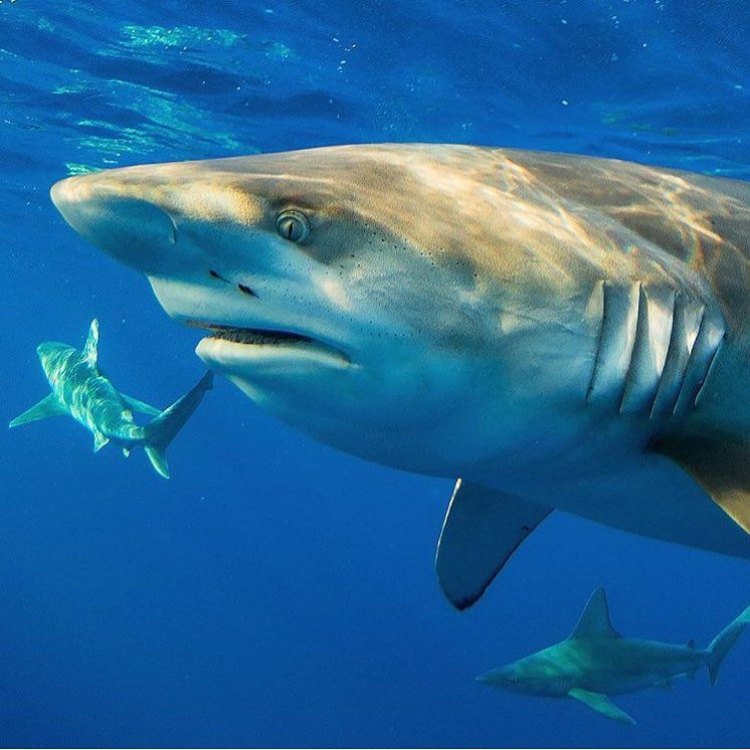
Galapagos Shark
- Adult Size: Up to 3.7 meters
- Average Lifespan: Up to 24 years
- Reproduction: Viviparous
- Reproductive Behavior: Mating occurs year-round with peak activity during the warmer months
- Sound or Call: Unknown
- Migration Pattern: Partial migration, some individuals are migratory while others are resident
- Social Groups: Usually solitary, but can form aggregations
- Behavior: Nocturnal
- Threats: Habitat destruction, overfishing, bycatch
- Conservation Status: Near Threatened
- Impact on Ecosystem: Apex predator
- Human Use: Fishing, ecotourism
- Distinctive Features: Dorsal fin is tall and slender with a slightly rounded tip
- Interesting Facts: The Galapagos Shark is the most abundant shark species in the Galapagos Islands
- Predator: Orcas
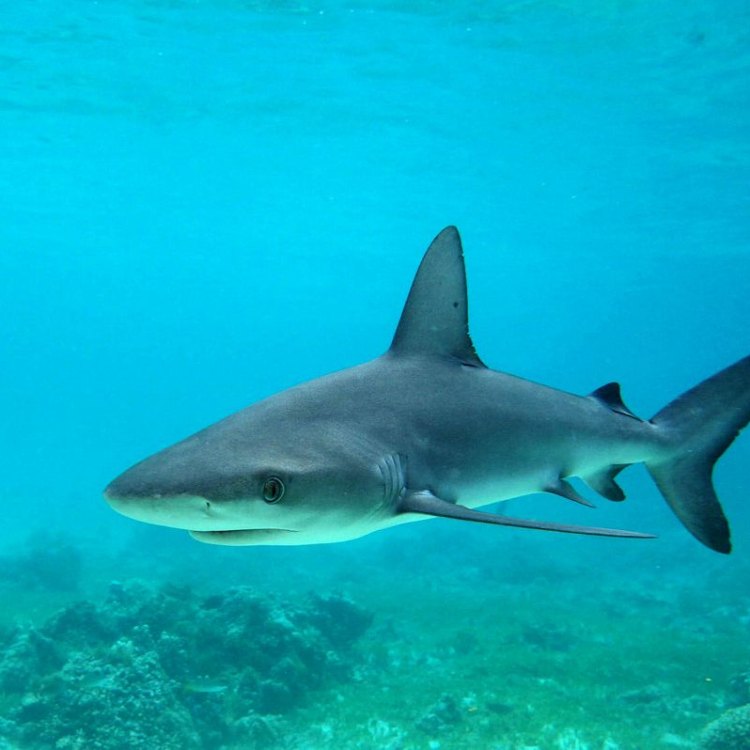
Carcharhinus galapagensis
Exploring the Depths of the Galapagos Shark: A Fascinating Look into the Life of an Apex Predator
The ocean has always been a source of mystery and wonder, with its vast depths and diverse inhabitants. Among the many fascinating creatures that roam the ocean, the Galapagos Shark stands out with its unique features and behavior. This formidable predator, known for its tall and slender dorsal fin, has captured the attention of many marine enthusiasts and scientists. Let's dive into the depths of the Galapagos Shark and discover its intriguing characteristics and role in the ecosystem PeaceOfAnimals.Com.At first glance, the Galapagos Shark may be mistaken for a typical shark with its grey and white coloration and powerful build. However, this species has distinct features that set it apart from other sharks. The adult Galapagos Shark can grow up to 3.7 meters in length, making it one of the largest shark species in the Galapagos Islands. It has a long and pointed snout, and its dorsal fin is tall and slender with a slightly rounded tip, giving it a unique and striking appearance.
Aside from its size and physical features, the Galapagos Shark also has a long lifespan, with individuals living up to 24 years. This is relatively long for a shark, with some species only living up to 15 years. This longevity allows the Galapagos Shark to play a crucial role in the delicate balance of the marine ecosystem for an extended period, as we will explore later in this article.
Reproduction is a vital aspect of any species, and the Galapagos Shark has a unique method of giving birth Glen Of Imaal Terrier. Unlike most shark species, which lay eggs, the Galapagos Shark is viviparous, meaning that it gives birth to live young. This process involves the development of the embryos inside the female's body, where they are nourished through a placenta-like structure until they are ready to be born. This reproductive behavior is also seen in other shark species, such as the Great White Shark and the Bull Shark.
When it comes to mating, the Galapagos Sharks are active year-round, with peak activity observed during the warmer months. However, scientists still don't know much about their specific mating behavior or if they have any specific sounds or calls used for communication during this process. It remains a mystery waiting to be unraveled by further research and observation.
One interesting behavior of the Galapagos Shark is its partial migration pattern. While some individuals may migrate to different areas, others are resident and do not leave their habitat. This behavior is not fully understood, but it is believed that the migratory individuals may do so in search of food or to give birth in a safer location.
The Galapagos Shark is known to be a solitary species, with individuals usually found on their own. However, they can also form aggregations, particularly when there is an abundant food source or during the mating season. The size of these aggregations can range from a few individuals to a larger group of up to 20 sharks.
If you're planning on a night dive in the Galapagos, you may be lucky enough to encounter a Galapagos Shark. This species is nocturnal, meaning that it is most active at night, making it a rare sight during the day. Its behavior at night is fascinating to observe, as it hunts and navigates through the dark waters with precision and grace.
Unfortunately, like many shark species, the Galapagos Shark faces several threats that put its survival at risk. Habitat destruction, primarily through pollution and climate change, is a significant concern for this species. Overfishing and bycatch, where these sharks are caught unintentionally in fishing gear, are also serious threats to their population. These activities have led to a decline in their numbers, and the International Union for Conservation of Nature (IUCN) has listed the Galapagos Shark as Near Threatened.
The Galapagos Shark plays a crucial role in the marine ecosystem as an apex predator. This means that they are at the top of the food chain and play a vital role in maintaining a balance in the ecosystem. They control the population of their prey, such as fish and squid, and prevent any overpopulation that may have negative effects on the ocean environment. Without the Galapagos Shark, the food chain in the region would be disrupted, leading to a domino effect on other species and ultimately, the entire ecosystem.
Human use of the Galapagos Shark includes fishing and ecotourism. As an economically important species, fisheries target the Galapagos Shark for its meat, fins, and liver oil. This poses a threat to their survival, as well as disrupting the natural balance of the ecosystem. On the other hand, ecotourism provides an opportunity for people to encounter these magnificent creatures in their natural habitat, which can help raise awareness and appreciation for their conservation.
While the Galapagos Shark may seem like a fierce and feared predator, there is one creature that poses a threat to its survival - the orca, also known as the killer whale. These apex predators of the ocean have been observed in the Galapagos hunting and preying on the Galapagos Shark. This is a natural part of the ecosystem, as all species, including sharks, can become prey to other animals.
As we continue to learn more about the Galapagos Shark, there are many fascinating and unknown facts about this species. For instance, it is the most abundant shark species in the Galapagos Islands, with an estimated population of over 100,000 individuals. This fact may come as a surprise, as the Galapagos Shark is not as well-known as other shark species, such as the Great White Shark or the Hammerhead Shark. This highlights the importance of further research on this species and the need for conservation efforts to protect it.
In addition to its abundance, the Galapagos Shark holds a special place in the hearts of the local communities living in the Galapagos Islands. It is part of their culture and identity, with many traditions and stories revolving around this magnificent predator. These traditions, along with conservation efforts, have helped raise awareness and promote the protection of the Galapagos Shark.
In conclusion, the Galapagos Shark is a remarkable and fascinating species that continues to captivate our curiosity and awe. Its unique features, behavior, and role as an apex predator make it an essential part of the marine ecosystem. However, like many shark species, it faces several threats that put its survival at risk. To ensure the protection of the Galapagos Shark and its vital role in the ecosystem, it is crucial to continue studying and understanding this species while raising awareness and implementing conservation measures. Let us continue to explore and appreciate the depths of the ocean and all the incredible creatures that inhabit it, including the magnificent Galapagos Shark.
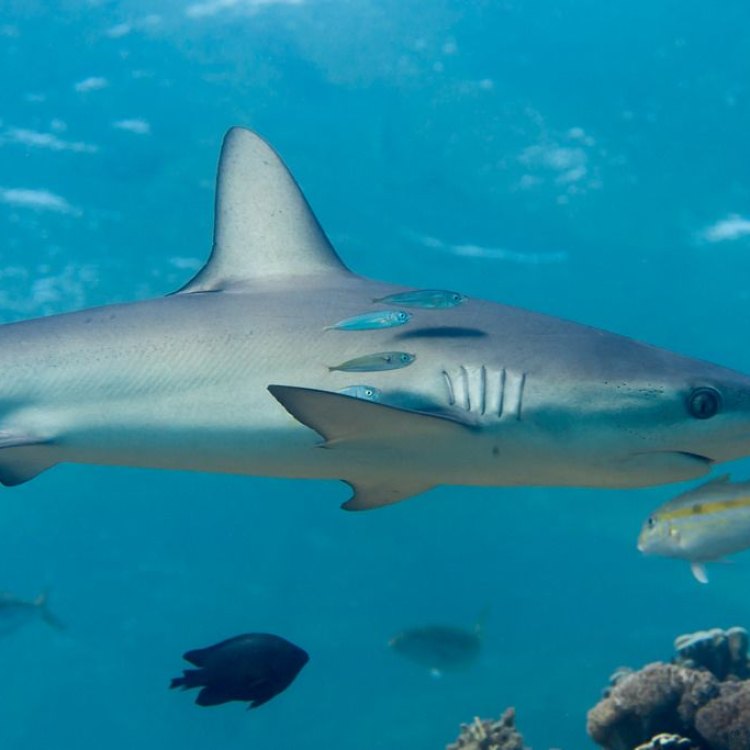
The Elusive and Resilient Galapagos Shark: A Master of the Eastern Pacific Ocean
Disclaimer: The content provided is for informational purposes only. We cannot guarantee the accuracy of the information on this page 100%. All information provided here may change without prior notice.









